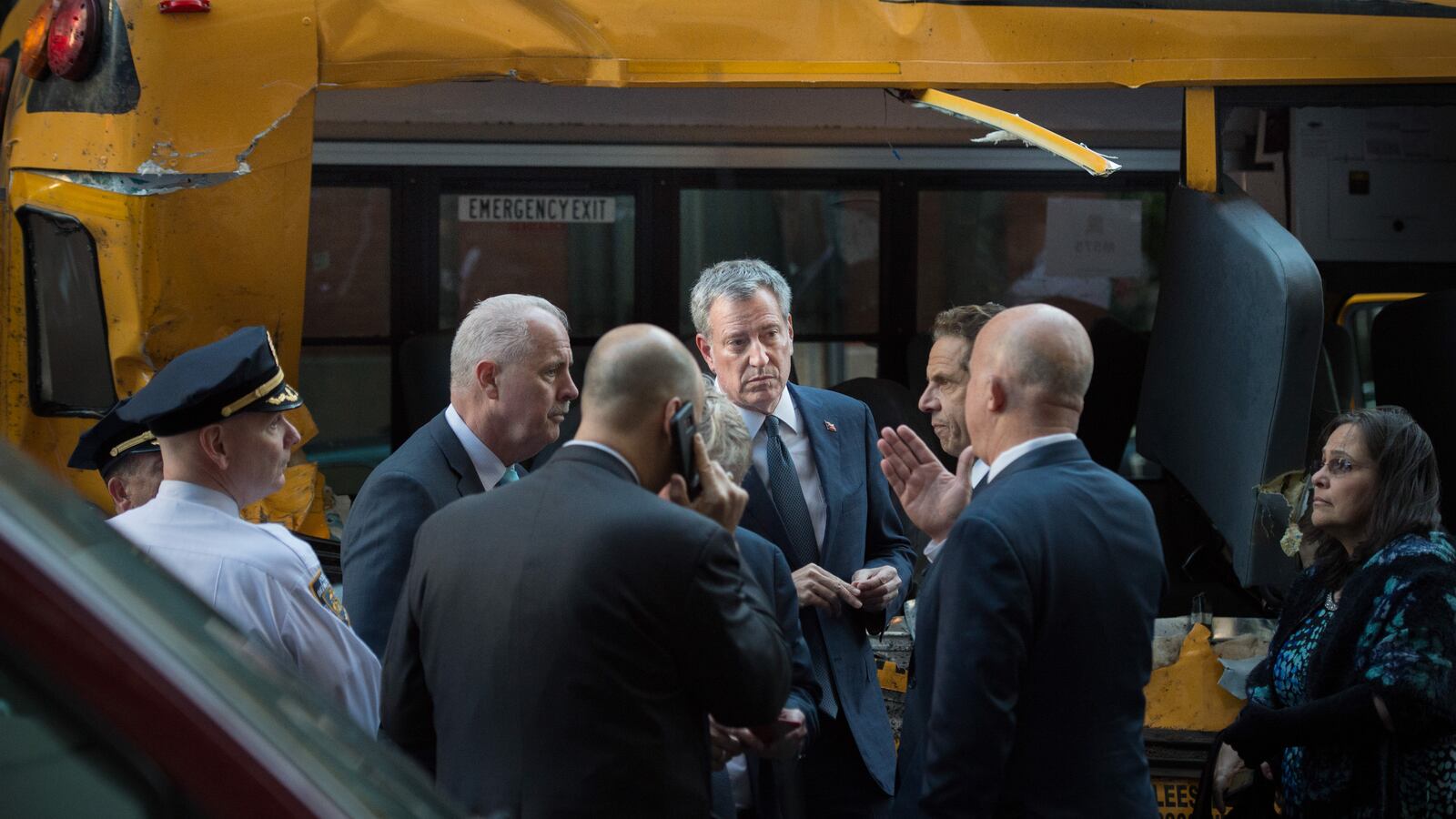On Tuesday, a man sped a pickup truck down bike lanes in Lower Manhattan, killing eight people and wounding over a dozen others before ramming into a yellow school bus, temporarily trapping two students inside.
On Wednesday, one of those students, a 16-year-old who had suffered minor injuries, insisted on returning to school. He wanted to keep his perfect attendance record.
But there was a problem: “The bus actually didn’t pick him up, thinking he wouldn’t be there,” said schools Chancellor Carmen Fariña, who told the story Thursday at a press conference near the site of the attack. So the boy’s mother called for a car to take him from Brooklyn to his Manhattan school.
“When I spoke to him yesterday,” Fariña continued, “and this is something I’m never going to forget in terms of my experience as chancellor, he said to me: ‘I told myself I’m going to be fine because a lot of people want to help me.’ That’s what New York is all about.”
Fariña added that the other student who was on the bus had gone through surgery but was “on the mend.” Two adults on the bus, including the driver, were expected to recover.
On Thursday, Mayor Bill de Blasio and Fariña applauded the response from a handful of schools in Lower Manhattan to what has been described as the deadliest act of terror in New York City since 9/11. The schools swiftly moved into “shelter in place” mode, a protocol where classes are supposed to continue as scheduled, but staffers seal the entrances and exits.
“I think they handled a very tough situation exceptionally well,” de Blasio said.
Tuesday’s attack ended just as some students from Stuyvesant, one of the city’s elite specialized high schools, were leaving for the day.
Several students said they watched as the accused attacker, 29-year-old Sayfullo Saipov, emerged from his truck holding what were later found to be a paintball gun and a pellet gun, before being shot by a police officer.
“I saw everything,” said Hadi Moukdad, a Stuyvesant freshman.
When the gunshots rang out, Moukdad said it was unclear where they were coming from, so he fled. Other students who had also left for the day ran back to the school only to find themselves locked out. One ducked into a nearby building.
Officials considered closing Stuyvesant the day after the attack, but ultimately decided to keep it open.
“I thought it was important to send the same message that the rest of the city was sending,” de Blasio said, “that we would not be deterred by terrorism, that we would continue our work as normal.” The mayor noted that one Stuyvesant teacher injured in the attack made it to work the following day.
Still, when students arrived Wednesday, many were visibly shaken. Some teachers invited them to reflect on what had happened, while others carried on classes as normal. One group of students wore black in solidarity with those who had been killed.
“It was a really weird atmosphere — no one really knew what to say,” said Ethan Shenker, a freshman who could see the attack unfold from his classroom and later met with one of the trauma counselors the city made available. “I’ve been trying to keep it out of my head.”
As the attack unfolded, Stuyvesant teacher Annie Thomas was in the middle of a class centered on Amy Tan’s book “The Joy Luck Club,” she told the New Yorker. The discussion stretched on for three hours while students waited to be evacuated.
Later, Thomas reflected on what it means for her Muslim students in particular to live through such acts of terror.
“Especially after 9/11, every time I see that something is a terrorist incident, and someone has said ‘Allahu Akhbar,’ I feel a pit in my stomach, because terrorism is the evil opposite of what Islam is,” she told the magazine. “So many of our kids here at Stuyvesant are Muslim, and they fear being tarred with this kind of thing.”
Across Chambers Street, P.S. 89 Principal Veronica Najjar didn’t miss a beat after she received word of the attack, according to the New York Times.
Her students had just been dismissed, so the school’s staff helped pull them back into the building. Najjar, who helped guide her school through the 9/11 attacks, explained that the most important thing is for the adults to stay calm and speak to students truthfully, without divulging too many upsetting details.
“We just make sure that we’re giving kids the facts that are not overly explicit or overly graphic,” she told the Times. “When you stick to the facts with kids, without giving them any embellishment or emotion with it, they are usually very satisfied. They just want to know that you’re being truthful with them.”
During Thursday’s press conference, Fariña said the staff members at all four schools in the vicinity of the attack had responded exactly as she had hoped.
“Teachers stayed until every child was home, until every parent got listened to, until everyone was deemed safe,” she said.


